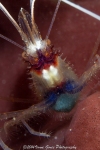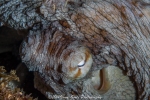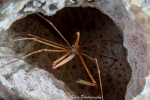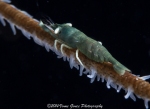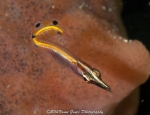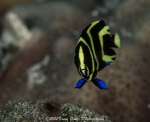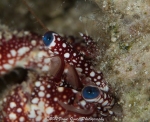Every year we travel to Roatan for a week of SCUBA diving at CoCoView Diving Resort. Rustic and simple, you couldn’t ask for a better dive setup. The dive boat captains are on top of your every need, and the resort is mapped out for simplicity. Accessed only by boat, it is also a quiet place to hang out. There are no phones, and no television. All the entertainment is beneath the surface of the ocean that is right at your doorstep.
I became SCUBA certified in 1992 when we lived in New Orleans. We went to Mexico where I did my certification dive, and I had the opportunity to marvel at the amazing coral and sea life that was Palancar Reef. Six months later, my husband and I obtained our advanced SCUBA certification where the check out dives were done off the coast of Florida. This was my first experience with sea sickness, as well as the night dive that not only heralded SCUBA divers, but spear fishing participants. Following a day of semi unconsciousness from the effects of dramamine, there was a dip in a naturally fed spring where the temperature was 53 degrees and we were required to stay down for 45 minutes. So far, my perceived value of obtaining an advanced certification was roughly nil.
Shortly after, we moved to Virginia where I promptly gave birth to three adorable little boys in eleven months, and the wonderful memories of Palancar reef and the amazing sea life were relegated to the distant past. Then in 2001 my husband was introduced to a gentleman that taught SCUBA diving as well as organized SCUBA trips, and suddenly life beneath the surface became forefront for us again. It was another two years before we took another trip to SCUBA dive, this time to Roatan to dive with the group from Holladay SCUBA.
It wasn’t love at first sight with me. My biggest complaint then is still my biggest complaint now. The water around Roatan, and CoCoView Resort are fairly rough, and it’s a struggle for me to enjoy getting on a boat because of this. I’ve tried every seasick remedy known to man, finally settling on Scope Patches. They aren’t perfect, but the best resource for me. This first trip after a hiatus of roughly 10 years was like starting all over, and I didn’t enjoy it. For some reason, we saw little sea life, I was uncomfortable, and I left not only wondering what I had ever enjoyed about it to begin with, but also thinking it wasn’t something I wanted to do again.
Then a curious thing happened. Our oldest, when he was 14, expressed an interested in SCUBA diving. He took lessons, and my husband took him to Roatan. I secretly thought is would be a disaster, because of my recollection that there just wasn’t a lot to see there. But when they returned, they had pictures from a simple point and shoot underwater camera that my husband had invested in that showed a variety of sea life I simply couldn’t believe. Eventually, his twin brothers became certified, and we’ve taken all of them to Bonaire and to Roatan. The oldest accompanied my husband to Indonesia for ten days on a live aboard (seeing that I don’t do boats very well), which turned out to be the trip of a lifetime.
I enjoyed Bonaire the most, simply because of the water factor. Smooth and easy, I did every dive and never got sick. The downside is, it’s fairly expensive, whereas Roatan is more reasonable. There is one dive site in Roatan that provides a fairly smooth ride and that is French Cay Cut. Located between the reef and shore, this is a muck dive; the boat drops divers in a sandy muck bottom–teeming with micro life, but little else. You can make your way however, through the cut and along the wall of the reef for an excellent exploration of larger sea life–even a turtle or two, but be prepared for fairly large surge on top of the coral.
So I made my return to SCUBA diving in 2010. Only this time my hobby of photography coalesced with SCUBA diving, and an entirely new horizon opened up before me. A horizon of maddening moments, sheer frustration, and epic failure that only hardened my resolve to prove to myself that I wasn’t really as stupid as I felt with a camera in my hand below the surface. In my extremely humble opinion, underwater photography is not only the most difficult photography to practice, but it seems to contradict so many rules of land based photography. It is it’s own world.
So without going on too much longer, here are the first of three years of underwater photos that I’ve felt halfway decent about. If you would like to see some of the top photographers in this realm, check out these links: Todd Winner or Scott Geitler. You won’t be disappointed.





